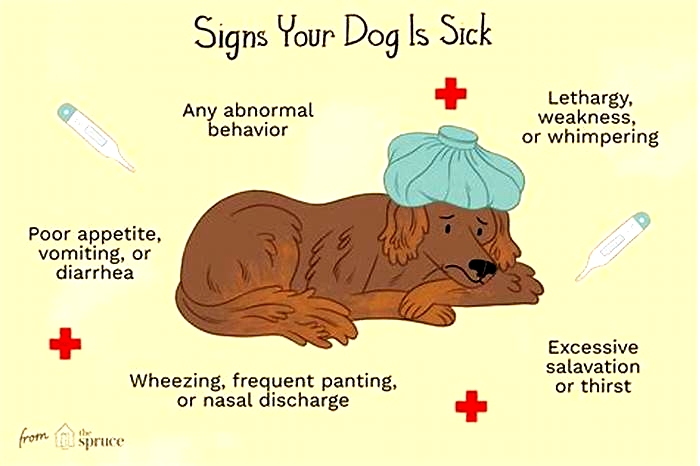What pain killer can I give my dog

Pain meds for dogs: Vet's guide to what to give a dog for pain
When humans feel the onset of pain, it's common to head to the medicine cabinet to alleviate our distress, but what about our pets? Are pain meds for dogs easily available and, if so, what types can you expect to provide our four-legged friends with comfort?
Whether your dog is showing signs of being in pain, had recent surgery or a traumatic injury, working with your veterinarian to obtain appropriate pain medication can help keep your dog as comfortable as possible.
Veterinarians have access to a wide variety of canine pain medications. Each of these drugs functions slightly differently, with differences in their expected benefits and likely side effects.
Dont get overwhelmed by these options. Instead, read on to learn more about what to give a dog for pain.
What can I give my dog for pain relief?
When your dog is acting uncomfortable, it can be tempting to check your medicine cabinet for something that may help. Resist that temptation!
Human pain medications can have serious negative effects on dogs. Additionally, dog painkillers that are prescribed for one dog under one set of circumstances may be harmful for a different dog or under a different set of circumstances.
If your dog is in pain, contact your veterinarian. Your veterinarian can help determine the underlying cause of your dogs pain, while also recommending the safest and most effective pain medication for your dogs circumstances.
Carprofen
Carprofen, also known as Rimadyl, is a commonly-used pain medication in dogs. Carprofen for dogs is a non-steroidal anti-inflammatory drug, or NSAID, which means that it controls both pain and inflammation. It works similarly to how ibuprofen and other NSAIDs work in humans, but with a much lower risk of serious side effects. (Ibuprofen should never be given to dogs, because it can cause severe liver damage.)
Veterinarians prescribe carprofen in a variety of circumstances, such as an acute injury, post-surgical pain, or chronic arthritis. This drug has been used in dogs since 1997, and veterinarians often reach for this pain medication due its long history of successful use.
Although carprofen is generally well-tolerated, side effects can occur. Watch your dog closely for changes in appetite, nausea, or diarrhea. If side effects occur, stop giving the medication and contact your veterinarian. Giving carprofen with a full meal may decrease the risk of side effects.
Metacam
Metacam, also known as meloxicam, is another NSAID prescribed for dogs experiencing acute or chronic pain. It has been used in humans since 1977, but was not labeled for use in dogs until 2003. It is typically provided as an oral suspension (liquid), but its generic form can be obtained as tablets.
Meloxicams efficacy and potential side effects are similar to carprofen. Just like in the case of humans, though, each dog is an individual. Some dogs respond better to carprofen, while others respond better to meloxicam. It may take some trial and error, and ongoing communication with your veterinarian, to find the most effective medication for your dog.
Deramaxx for dogs
Deramaxx is an NSAID, like carprofen and meloxicam. It was introduced in 2002, with the primary goal of being more specific in its effects on the body. Unlike carprofen and meloxicam, Deramaxx is designed to only target the specific chemical pathways involved in pain and inflammation.
In theory, Deramaxxs specificity is accompanied by a lower risk of side effects than meloxicam and carprofen. Its important to remember, however, that each dog is an individual. Side effects can still occur with Deramaxx, just like with any other medication.
Previcox
Previcox is an NSAID that was first approved for use in dogs in 2004. It is similar to Deramaxx in its mechanism of action. In theory, it offers more targeted action than carprofen and meloxicam, with a lower risk of side effects. In reality, however, individual effects may vary.
Gabapentin
Gabapentin for dogs is used off-label to treat a variety of conditions, including seizures, anxiety, and pain. Its mechanism is not fully understood, but it appears to impact how nerve signals are transmitted in the body. This can reduce the sensation of pain. Gabapentin is especially beneficial in the treatment of neuropathic pain, or pain that involves an issue with the nerves. It is rarely used alone and is often combined with other pain medication.
The most common side effect seen with gabapentin is sedation. Less common side effects include vomiting, diarrhea, weakness, and/or trouble walking.
Tramadol
Tramadol for dogs was once widely used to control pain. In recent years, however, there has been considerable debate over its benefits in veterinary patients. Scientific studies suggest that it may have limited benefits in most patients. However, many dog owners feel that alleviates their dogs discomfort, especially when combined with an NSAID.
Side effects of Tramadol may include sedation, vomiting, diarrhea, or constipation.
Can dogs have aspirin?
While veterinarians do occasionally prescribe aspirin for dogs, for the treatment of specific medical conditions, aspirin is not commonly recommended as a pain medication.
Aspirin has a far greater risk of causing side effects than NSAIDs that have been developed for safe use in dogs. The most serious risk associated with aspirin is gastrointestinal ulcers, which can lead to significant blood loss.
Catherine Barnette DVM
Dr. Barnette is a graduate of the University of Florida, where she received both her B.S. in Zoology and her Doctor of Veterinary Medicine (DVM). She has 15 years of clinical experience as a small animal veterinarian, treating dogs, cats, and occasional exotic patients. She now works as a freelance veterinary writer, creating educational content for veterinarians, veterinary team members, and dedicated pet owners.
What human medicine can dogs take?
If your dog is experiencing pain, or any other signs of discomfort or illness, do not attempt to treat the problem with human medication. Dogs bodies do not work like ours, and many human medications are potentially toxic to pets.
Contact your veterinarian if your dog is showing signs of pain or illness. Your veterinarian can recommend the best possible treatments for your pet.
In the event that your veterinarian does feel that your dog would benefit from a human medication, they will provide you with appropriate dosing and guidance to ensure that you can give the medication safely, with minimal risk to your dog.
Summary
Veterinarians have access to many different painkillers for dogs, but there is no single best medication. Choosing the right pain medication(s) for your dog requires an understanding of the underlying cause of your dogs pain, combined with an understanding of your dogs overall health and predisposition to side effects.
Your veterinarian may prescribe a single medication or a combination of medications, depending on your dogs circumstances. This pain management plan will be created in a way that maximizes your dogs pain relief, while minimizing the risk of side effects.
Pain Meds for Dogs
Healthcare options for dogs continue to improve.
However, as our four-legged companions start to live longer lives, theyre more at risk for disease and discomfort.
Luckily, theres several options available to help your pup.
In this article, youll learn to recognize signs of pain in dogs. Youll also understand which pain medications are safe for them and whether they need a prescription from their vet, or if you can get them over the counter.
Key Takeaways
- It's important to recognize signs of pain in a dog so that you can seek help and medical support from your veterinarian.
- There are some medications that humans and dogs can both take, but some may be toxic to pups.
- Always consult with your vet before giving your dog new medication.
Signs a Dog Is in Pain
Its important to understand the signs of pain in your dog so you know when to seek help from their vet.
By understanding these symptoms, you can better monitor your dogs progress when they're taking medication and recognize any signs of pain.
There are several animal pain scales that can help you rate your pets pain level, such asthis canine acute pain scale.
Signs a dog is in pain include:
Restlessness or easily distracted
Visible discomfort (pacing, panting, hiding, arched back)
Whimpering, crying, groaning, or howling
Licking, rubbing, biting, or chewing woundor surgery site
Droopy ears, looking worried (shifty eyes, arched eyebrows)
Not responding when called
Not moving all or part of their body
Not interacting with people
Shifting their weight orlimpingto protect certain areas
Growling, flinching, pulling away, crying, biting, or whimpering when touched
By understanding these symptoms, you can better monitor your dogs progress when they're taking medication and recognize any signs of pain.
Are Human Pain Meds Safe for Dogs?
There are a few medications that humans and dogs can both take, such as certain heart medications, thyroid medications, and antibiotics.
However, even if a med is safe for dogs, the dosing is usually different from a humans. Additionally, the form in which the medication is carriedsuch as the capsule or the additive to make a tabletmight be toxic or harmful to your pet.
A humans metabolism is also much different than a dogs. Because of this, some medications that are safe for people can be toxic to dogs, or even fatal.
Never give your dog these common over-the-counter human pain relievers:
These medications can cause stomach bleeding, kidney failure, and liver failure.
Always ask your vet before giving your dog any human medication.
Pain Meds for a Dog
Your vet will work with you to develop an special plan for your pup, depending on the type of pain your dog is experiencing.
This may include:
Vet-prescribed nonsteroidal anti-inflammatory drugs (NSAIDs), which help relieve pain by decreasing inflammation. Note that even though ibuprofen and naproxen are also NSAIDs, they should never be given to your dog. Always consult with your vet before giving your dog a new pain medication.
Opioids, which work in the brain to limit pain perception (these are typically reserved for more severe pain).
Other drugs thatcan affect the nervous system at various levels (such as gabapentin) and limit pain signal perception.
Supplementsare used in cases of mild to moderate pain, or with other medications to limit the amount of a drug your dog may need to take.
A combinationof physical therapy,acupuncture, chiropractic manipulation, and environmental modifications. This is typically for pets that don'ttolerate medication well.
NSAIDs for Dogs
Certain NSAIDs that can safely be used for dogs are approved by the United States Food and Drug Administration (FDA) to help control pain and inflammation in dogs withosteoarthritis.
These medications work by decreasing a pups bodily response to inflammation, which reduces pain.
However, NSAIDs can disrupt a pups bodily functions, such as the protection of the lining of the stomach and intestines, blood flow to the kidneys, and platelet function.
Only give your dog NSAIDs that your vet has approved. Work closely with your vet while your dog is taking NSAIDs.
Some petssuch as dogs with pre-existing liver or kidney diseasemay not be able to take NSAID medications. These medications require good kidney and liver function to be properly used by the body and cleared from the bloodstream.
Your veterinarian may want to perform blood work and a urinalysis prior to your pup starting NSAIDs and/or once your dog is on the medication for a certain period.
These tests can help show how your dogs body and organs are functioning.
NSAIDs can be effective in controlling pain and inflammation in your pup. They may be used in a few ways, such as:
Your veterinarian may prescribe them for a short time after performing surgery such as aspay,neuter, ordental procedure.
The vet may also prescribe them longer-term, for diseases such aship dysplasiaand osteoarthritis.
NSAIDs can also be used safely with some other medications including tramadol, gabapentin, orjoint supplements.
Some NSAIDs that vets commonly use include:
Carprofen (Novox or Rimadyl):This prescription medicationcomes in tablet, caplet, or chewable tabletform. This is typically prescribed once or twice daily.
Deracoxib (Deramaxx):This prescription medicationcomes as a chewable tabletand is prescribed once daily.
Firocoxib (Previcox):This prescription medicationis available as a flavored chewable tabletthats prescribed once daily.
Meloxicam (Metacam):Meloxicam is a prescription medicationthat comes a flavored tablet or liquid and is prescribed once daily.
Grapipant (Galliprant):This medicationis prescribed by a vet (once daily) and taken by tablet. This NSAID may have fewer side effects than other NSAIDs, as it works at a different point in the inflammatory pathway.
When given as prescribed, NSAIDs are typically safe, effective medications to help dogs with pain.
Always monitor your pup closely for side effects and signs of toxicity.Call your vet immediately if you suspect that there is an overdose situation or if your pet is not tolerating their medication well.
Opioids for Dogs
Opioid medications work at receptorsareas on the cells which the medication will attach to get a pain relief response.
These receptors in a pups brain provide relief from moderate to severe pain.
Opioids can be prescribed after surgery, or used as part of a medication plan to sedate a dog before general anesthesia is given. However, opioids have several regulations and limitations, and they must be prescribed by your dogs vet.
Because they are controlled drugs (medications highly regulated by the federal government), your vet must keep a dispensing log that can be audited by the United States Drug Enforcement Administration (DEA).
Opioids can have side effects in pets, including:
A few common opioids include:
Morphine:Morphinecan come as a liquid, extended-release tablet, or extended-release capsule. Typically, it's used for surgical pain (such as orthopedic procedures) or severe trauma. This medication should be given for short-term use only.
Buprenorphine:This medication comes as a liquid but is not meant to be swallowed. Its squirted into the mouth for absorption by vessels under a dog's tongue. Its typicallyused for surgical pain, cancer pain, or trauma. Its for short-term use only.
Codeine:Codeine can come as a liquid or tablet. Its typically used for severe arthritis pain, chronic collapsing trachea cough, or surgical pain. This med should be prescribed for short-to-medium-term use.
Butorphanol:This drugcan come as a liquid or tablet, is used for surgical pain, and should be given for short-term use.
Fentanyl:Fentanyl is prescribed and given as a liquid or transdermal patch. A transdermal patch allows for the medication to be applied to and absorbed by a dog's skin.
Other Pain Meds for Dogs
Other pain meds your vet may prescribe for your pup are:
Joint Supplements for Pain in Dogs
A few helpful supplements for dogs in pain include:
Glucosamine:A natural substance used to protect cartilage, this supplement is used for mild pain from hip dysplasia and spinal cord injuries. It comes in many forms, including tablets, chews, and liquids. Its available over the counter.
Chondroitin:This natural substance is used to protect a dogs cartilage. Chondroitin is used for mild pain from conditions like hip dysplasia and spinal cord injuries.It comes in many forms, including tablets, chews, and liquids. This is also available over the counter.
Adequan:This injectable productis used for pain from osteoarthritis and has anti-inflammatory benefits. You will need a prescription from your vet for this supplement.
Fish oil:This natural substanceis used for pain from osteoarthritis, skin disease, kidney disease, heart disease, inflammatory bowel disease, diabetes, epilepsy, and some types of cancer, and has anti-inflammatory benefits. Fish oil for pups is available over the counter.
How to Comfort a Dog in Pain
Work closely with your veterinarian to create a plan for your pets pain management.
There are a few ways you can modify your home to help your pup. These changes are often used in collaboration with pain medications to help pets feel comfortable.
Manage Your Pets Weight
By helping to manage your pets weight, it will limit excessive strain on joints and risks for concurrent diseases such as diabetes or heart disease.Work with your vet to modify your pets diet and develop light exercise routines that your pet can tolerate. This will help to slowly achieve goals over time.
Get Your Pet Moving
Daily walking, swim therapy, or other low-impact exercises keep muscles and joints moving and healthy. These activities are also great for your dogs mental stimulation. Many forms of exercise release natural endorphins and help control pain.
Make Modifications To Your Home
Help your dog maneuver around your home more easily with things like carpet runners, dog boots, or socks with grips.
Assess any dog doors, stairs, or areas that are difficult to get up, into, and out of. Purchasingramps or limiting access to areas may be required to keep your dog comfortable and safe.
Some pets may also benefit from elevated food and water bowls if they have pain in the neck or joints when bending to eat and drink.
Alternative Therapies
You can also ask your veterinarian aboutcomplementary therapies.
These include:
These are natural ways to enhance pain control when a pet can't tolerate medications or needs added benefits.
There are a variety of different medications, supplements, and alternative therapies to help your dog have some relief from their pain. Use any supplements or alternative therapies in conjunction with modern medicine for best results.
If your dog is in pain, have them examined by their veterinarian as soon as possible.Rememberall medications and supplements should be given exactly how they are prescribed by your vet.
Featured Image:Jnnn/iStock / Getty Images Plus via Getty Images
References
US Food and Drug Administration. Galliprant A Nonsteroidal Anti-Inflammatory Drug (NSAID) for Dogs with Osteoarthritis. September 2019.
Wunsch L, Schmidt B, Krugner-Higby L, Smith L. A comparison of the effects of hydromorphone HCl and a novel extended-release hydromorphone on arterial blood gas values in conscious healthy dogs. Research in Veterinary Science. 2010;88(1): 154-158.
WRITTEN BY
Amanda Simonson, DVMVeterinarian
I am a veterinarian passionate about helping animals. I practiced for 15 years in the hospital setting doing medicine, surgery, preventive...









